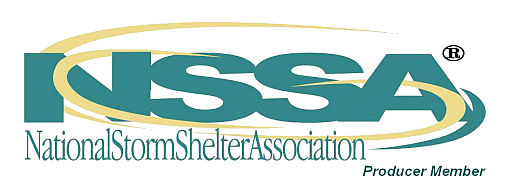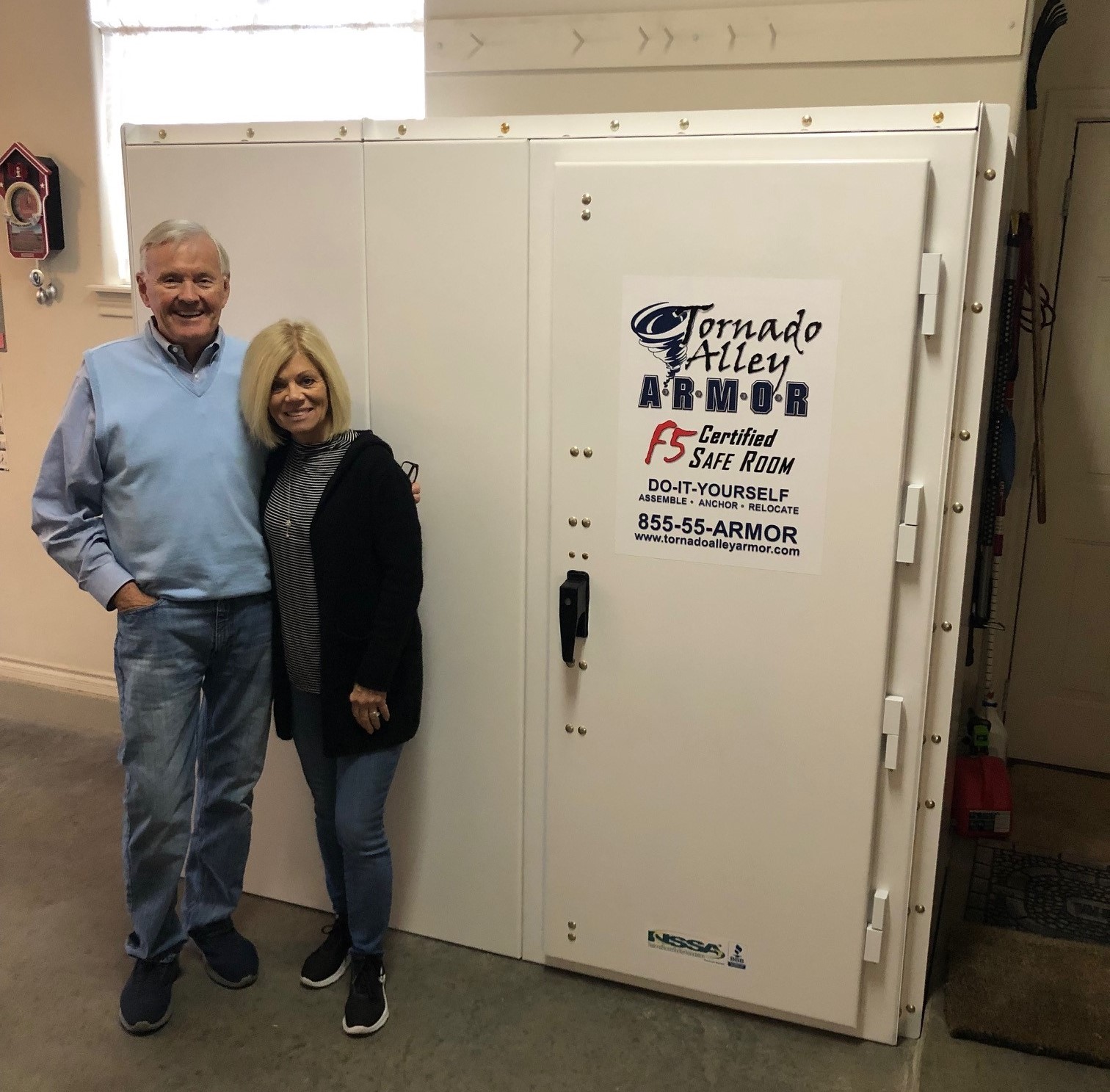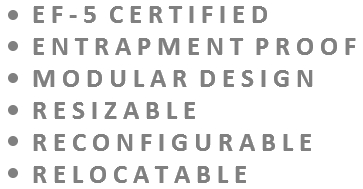National Storm Shelter Association Membership
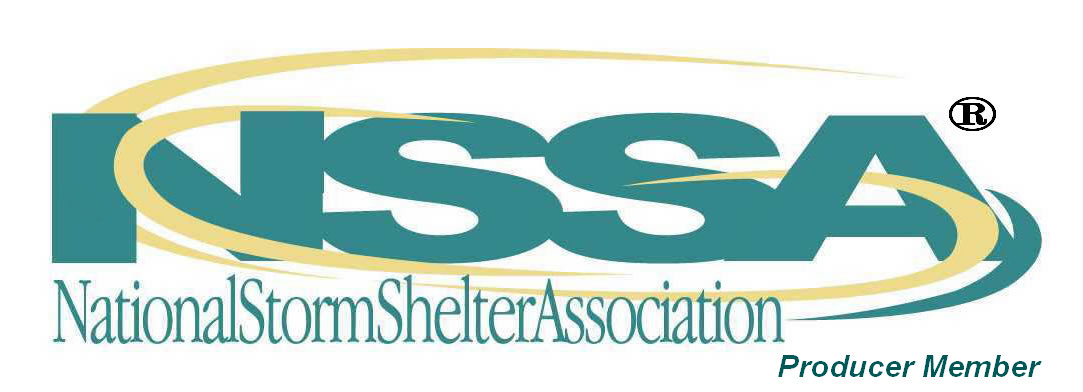
Yeah, it’s a really big deal, but why?
A: The safe room and storm shelter industry is completely unregulated!
(Translation: There are no consequences for producers who misrepresent their product, publish false or grossly misleading information or test videos, or do not follow FEMA guidelines)
______________________________________
But they have a letter from Texas Tech so that automatically means they’ve been checked out and are safe, right?
A: Definitely not, but it’s hard to tell, isn’t it?
An impact test letter alone ≠ FEMA compliance, but that’s what many manufacturers outside the NSSA will lead you to believe. If you don’t know the difference, they sure won’t volunteer that information since it could cost them a sale.
FEMA361 design compliance is NOT checked by the Texas Tech impact test facility.
Only the impact testing part of the FEMA standard are conducted and documented.
Therefore, you don’t know if an engineer has even looked at the host of other FEMA compliance recommendations for a safe design such as wind loads, anchoring systems, concrete slab requirements, and ventilation just to name a few.
______________________________________
I’m looking at shelters from another association. Do their members have to meet requirements as stringent as the NSSA’s?
A: NO!! As of Jan 2016, members of other associations ARE NOT required to subject their products to the most critical step ensuring your safety…..
INDEPENDENT 3RD PARTY ENGINEERING PEER REVIEW
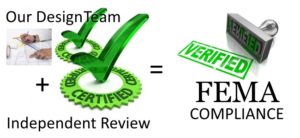
As an NSSA Producer Member, our entire design package is required to be double checked by an independent engineering firm which has been vetted and approved by the NSSA to ensure we meet all of the FEMA-361, ICC-500 and NSSA design standard recommendations for safe room construction. This process is followed for both new designs and changes to existing designs.
So why don’t all manufactures take the extra steps to verify their products are really safe and compliant to the design standards?
A: In our opinion, sadly it’s sales. A few years ago the Texas Dept of Emergency Management tightened up their requirements for rebate eligibility for shelter manufacturers due to serious quality control issues found in the unregulated shelter industry. After the TDEM rule change manufacturers had to join a “professional association” to be eligible to participate. The NSSA’s stringent quality control guidelines (to protect your safety) are difficult, time consuming and costly to satisfy, so another association was quickly formed by some manufacturers who were left “outside looking in”.
Their guidelines were essentially copied and pasted from the NSSA guidelines right up to this critical 3rd party verification step, which was oddly omitted from their membership requirement. Skipping this step made it much easier and less expensive to join that organization, and notably easier to participate in rebate programs by having fewer requirements…essentially acting as a cheap and easy “seal” source without requiring the scrutiny of due diligence. In fact, their members are only required to follow their regulations if a rebate is involved! Most importantly, there is no requirement to have their product independently verified.
Their website says it all…..
Where do you suppose that member was welcomed after being booted from the NSSA for publishing such grossly misleading nonsense? You guessed it…the other association.
So what does that mean to you and your family’s severe weather safety if your safe room doesn’t have the NSSA Seal?
While FEMA and other organizations offer recommendations for safe room designs and installation, manufacturers are not required by law to adhere to them. Some municipalities are starting to require minimal documentation, but it is typically limited to installation permits.
Depending on the knowledge, integrity, quality control and engineering expertise of your storm shelter manufacturer, you may or may not be adequately protected from the wind and debris from a tornado. Virtually anyone with a welder or cement mixer can start their own safe room company, build them virtually any way they choose, make any claims they want, and operate with no regulatory requirements, oversight or fear of non-compliance penalties.
Some shelter manufacturers take advantage of the public’s misconception of TTU’s role in FEMA compliance, using “Texas Tech Impact Tested” and “FEMA320 Compliant” claims interchangably…which they are not! So….who is verifying their “F5 certification” or “FEMA compliant” claims, or their wind load or lift resistance calculations, or their anchoring systems, ventilation systems, quality control measures, installation procedures, hinge, latch and door design, documentation, etc., etc……you?
Earning Producer Member status in the NSSA is a difficult, costly and time-consuming process meant to ensure your safety. There is NO LEGITIMATE EXCUSE for any safe room manufacturer to not be a member the NSSA unless they are unable or unwilling to meet all NSSA compliance requirements. NSSA Membership is recommended, endorsed and encouraged by meteorologists and weather professionals everywhere because it is the trusted and established authority on severe weather safety. The professionals at the NSSA are the same folks who worked with FEMA to develop safe room and hurricane shelter design guidelines found in FEMA 320, FEMA 360 & FEMA 361, including the impact testing conducted at Texas Tech University’s Wind Science and Engineering Research Center in Lubbock, TX. Why would you settle for anything less?
Did you know that at the time this article was written, out of the hundreds of safe room and tornado shelter manufactures in the US, only about 30 in the entire country had earned Producer Member status in the NSSA ? And…of those thirty, we were one of the first to meet the latest and most stringent verification requirements for SAFE ROOM Producer Members.

…and now you know why.
Simply put, they’ve set their bar lower than NSSA requirements.
Since independent verification goes the extra mile to ensure you have a verified compliant safe room with an unbiased double-check of all calculations, testing, design specifications and quality control measures, why would you purchase a shelter from anyone other than an NSSA member?
I’ve seen videos of cars being dropped from a crane or driven into shelters. I’ve even seen a steel ramming sled used. Is that realistic?
A: NOT EVEN CLOSE. Non-NSSA members can publish whatever they want regardless of whether the science behind the testing is legitimate or simply a smoke-and-mirrors sideshow.
As a matter of fact, the NSSA recently revoked the membership of a now-former member for publishing a seemingly “scientific” video so grossly misleading it tarnishes the image of the entire above ground shelter industry. It even calls into question the strength OF THE OFFENDER’S OWN DESIGN they have installed for many of their own customers!
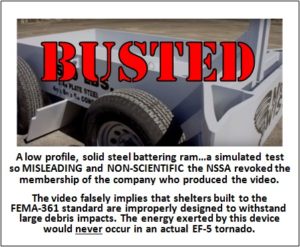
Where do you suppose that member was welcomed after being booted from the NSSA for publishing such grossly misleading nonsense? You guessed it…the other association.
So what does that mean to you and your family’s severe weather safety if your safe room doesn’t have the NSSA Seal?
While FEMA and other organizations offer recommendations for safe room designs and installation, manufacturers are not required by law to adhere to them. Some municipalities are starting to require minimal documentation, but it is typically limited to installation permits.
Depending on the knowledge, integrity, quality control and engineering expertise of your storm shelter manufacturer, you may or may not be adequately protected from the wind and debris from a tornado. Virtually anyone with a welder or cement mixer can start their own safe room company, build them virtually any way they choose, make any claims they want, and operate with no regulatory requirements, oversight or fear of non-compliance penalties.
Some shelter manufacturers take advantage of the public’s misconception of TTU’s role in FEMA compliance, using “Texas Tech Impact Tested” and “FEMA320 Compliant” claims interchangably…which they are not! So….who is verifying their “F5 certification” or “FEMA compliant” claims, or their wind load or lift resistance calculations, or their anchoring systems, ventilation systems, quality control measures, installation procedures, hinge, latch and door design, documentation, etc., etc……you?
Earning Producer Member status in the NSSA is a difficult, costly and time-consuming process meant to ensure your safety. There is NO LEGITIMATE EXCUSE for any safe room manufacturer to not be a member the NSSA unless they are unable or unwilling to meet all NSSA compliance requirements. NSSA Membership is recommended, endorsed and encouraged by meteorologists and weather professionals everywhere because it is the trusted and established authority on severe weather safety. The professionals at the NSSA are the same folks who worked with FEMA to develop safe room and hurricane shelter design guidelines found in FEMA 320, FEMA 360 & FEMA 361, including the impact testing conducted at Texas Tech University’s Wind Science and Engineering Research Center in Lubbock, TX. Why would you settle for anything less?
Did you know that at the time this article was written, out of the hundreds of safe room and tornado shelter manufactures in the US, only about 30 in the entire country had earned Producer Member status in the NSSA ? And…of those thirty, we were one of the first to meet the latest and most stringent verification requirements for SAFE ROOM Producer Members.
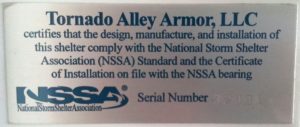
If it’s not NSSA sealed and verified, it’s “certification” is only as good as the manufacturer’s word.
Enter: National Storm Shelter Association
Membership in this elite association is voluntary, and Producer Member status is fairly difficult to attain. Only about 30 members nationwide have met all the requirements to attain membership, and Tornado Alley Armor is among them!
The primary purpose of the NSSA is to ensure the highest quality of manufactured and constructed storm shelters for protecting people from injury or loss of life from the effects of tornadoes, hurricanes and other devastating natural disasters. The association is self-policing to maintain public confidence and respect for the storm shelter industry.
The NSSA has set rigorous guidelines for production, manufacture, installation and erection of high quality storm shelters meeting the Association’s Storm Shelter Performance Standards, the requirements of other federal, state, and local standards and regulations, and the requirements of other governing material standards and codes.
Individual manufacturers or “other” shelter associations have lower standards to ensure standards compliance and safety, period.
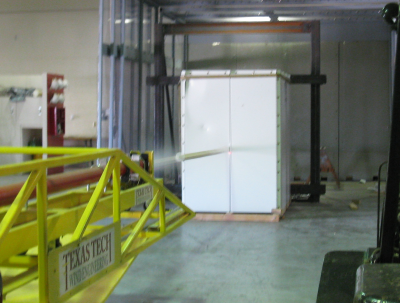

The NSSA also administers testing and engineering evaluation programs conducted by certified, independent entities for the purpose of issuing labels to qualified storm shelter producers, verifying members’ certification of compliance with the Association’s Storm Shelter Performance Standards.
Shelters and Safe Rooms with the NSSA seal are the choice of weather professionals, and qualification for available FEMA funding is virtually assured if your safe room carries the NSSA seal.



